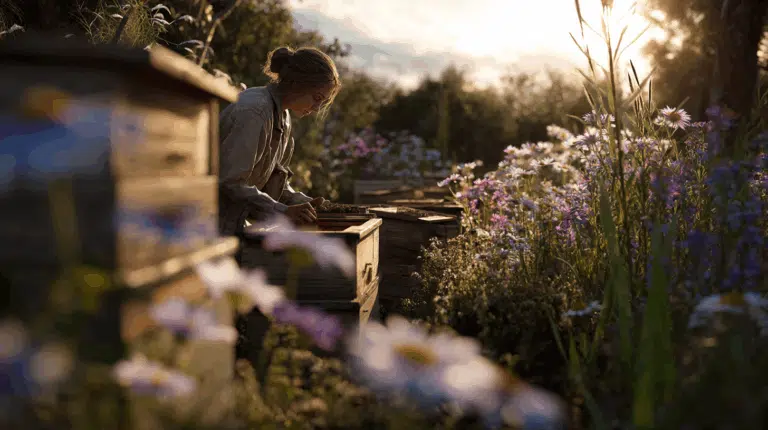Onze Lathyrus is speciaal geselecteerd op het maken van lange bloemstelen. Selecties geschikt voor productie in lichtarme omstandigheden in winter en voorjaar.
Met Lathyrus zaden van EasySeeds.eu haal je elegante, geurige bloemen in je tuin die perfect zijn als snijbloemen voor boeketten en bloemstukken. Lathyrus uit zaad zaaien, beter bekend als scherpe lathyrus of geurende pronkerwt, biedt tuiniers de mogelijkheid om hun tuin, borders of pergola’s te vullen met weelderige, kleurrijke bloemen die van de late lente tot de vroege zomer bloeien. Deze prachtige klimplanten zijn geliefd vanwege hun charmante bloemen, geur en veelzijdigheid.
Kleurrijke bloemen en aromatische geur
Lathyrus produceert bloemen in een breed scala van tinten, waaronder wit, roze, rood, paars en lila. De bloemen hebben een aangename, zoete geur, wat ze ideaal maakt voor verse boeketten en bloemstukken.
Langdurige bloei en elegante uitstraling
Lathyrus bloeit rijkelijk van de late lente tot de vroege zomer en biedt zo langdurige kleur en charme in borders, klimplantenstructuren en snijbloemenboeketten.
Onderhoudsvriendelijk en veelzijdig
Lathyrus is eenvoudig te kweken, geschikt voor borders, perken, pergola’s, en grote potten. Ze zijn ideaal voor zowel beginnende als ervaren tuiniers.
Bijvriendelijk en ecologisch
De bloemen trekken bijen, vlinders en andere nuttige insecten aan, wat bijdraagt aan biodiversiteit en een gezonde tuinomgeving.
Snijbloemen voor boeketten – De stevige stelen en geurige bloemen maken Lathyrus perfect voor verse boeketten en bloemstukken binnenshuis.
Borders & pergola’s – Voeg hoogte, structuur en kleur toe aan borders of laat Lathyrus klimmen langs pergola’s en trellissen voor een romantisch effect.
Potten en bakken – Compactere Lathyrus-soorten zijn uitstekend geschikt voor grote potten en balkonbakken.
Combinaties met andere snijbloemen – Mix Lathyrus met Zinnia, Tagetes of Dianthus voor een kleurrijk en geurend boeket of borderontwerp.
Zaaitijd – Zaai binnenshuis van februari tot maart of direct buiten na de laatste vorst voor een optimale start.
Grond & standplaats – Gebruik goed doorlatende zaaigrond en kies een zonnige tot halfschaduwrijke locatie.
Verzorging – Houd de grond vochtig tijdens kiemen en eerste groeifase; geef regelmatig voeding voor sterke en gezonde stelen.
Uitharden – Laat jonge planten geleidelijk wennen aan buitenomstandigheden voordat ze definitief worden uitgeplant.
Onderhoud – Verwijder verwelkte bloemen (deadheading) om de bloei te verlengen en gezonde planten te behouden.
Bij EasySeeds.eu vind je een uitgebreid assortiment Lathyrus zaden, geselecteerd op kiemkracht, geur, kleurvariatie en bloei-intensiteit. Of je nu borders wilt vullen, pergola’s wilt verfraaien of zelf geurige, kleurrijke boeketten wilt samenstellen – onze Lathyrus zaden brengen je tuin elk seizoen tot leven.
🌸 Ontdek nu ons assortiment en bestel eenvoudig online – Lathyrus zaden kopen doe je bij EasySeeds.eu!

Lathyrus valt in twee hoofdgroepen:
Lathyrus odoratus: dit is de klassieke pronkbonen (sweet pea), bekend om zijn betoverende geur en delicate bloemen. Deze soort wordt meestal als eenjarige gekweekt en is perfect voor tuinen en boeketten.
Lathyrus latifolius: een vaste (meerjarige) soort die minder geurend is, maar langere bloeiperiodes en een robuustere groeiwijze biedt, waardoor hij ideaal is voor borders en klimplanten.
Klimaat: Lathyrus gedijt het beste in koelere klimaten en groeit het best in de lente of vroege zomer. In warmere streken kan hij in halfschaduw worden geplant om bescherming tegen felle hitte te bieden.
Bodem: Pronkbonen geven de voorkeur aan goed doorlatende, vruchtbare grond die rijk is aan organisch materiaal. Ze profiteren ook van een bodem die vocht vasthoudt zonder nat of drassig te worden.
Zonlicht: Lathyrus groeit het beste in volle zon tot halfschaduw, afhankelijk van het klimaat. In koelere gebieden is volle zon ideaal, terwijl in warmere streken halfschaduw beter is.
Regionale overwegingen: Lathyrus groeit het beste in koelere klimaten, maar kan ook in warmere streken worden aangepast met de juiste verzorging en wat schaduw. De plant geeft de voorkeur aan goed doorlatende grond en regelmatige watergift, vooral in drogere gebieden. In zeer hete klimaten wordt Lathyrus vaak vroeg in de lente geplant, voordat de warmte toeneemt.
Lathyrus is een tijdloze, elegante klimplant die schoonheid en geur toevoegt aan tuinen en boeketten, en kan eenvoudig worden gekweekt door tuiniers van elk niveau.
Oogst wanneer enkele bloemen van de tros net beginnen te openen voor maximale vaashoudbaarheid.
Week de zaden een dag in lauwwarm water om de zaadhuid te verzachten en de kieming te bevorderen. Zaai de zaden 2–3 cm diep in vochtige, goed doorlatende grond en geef warme omstandigheden (18–20°C) voor snelle kieming.